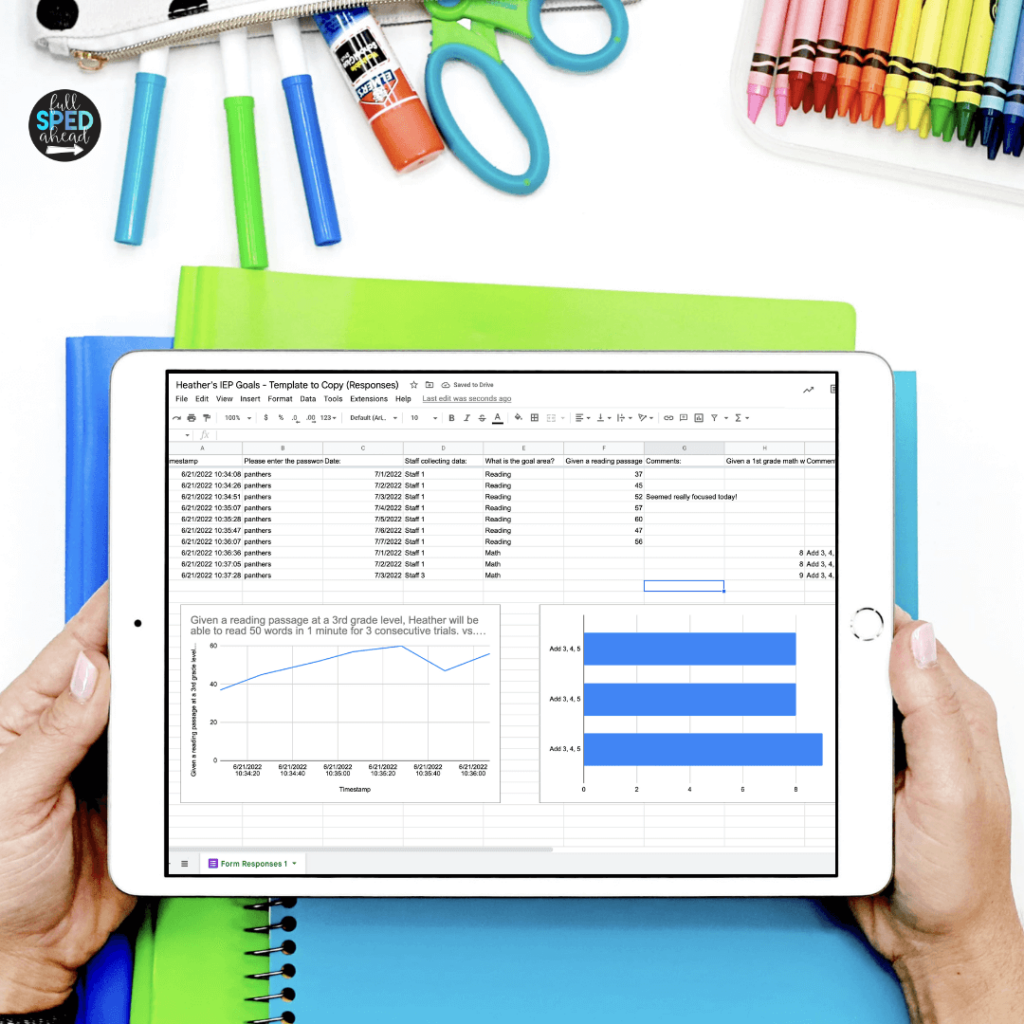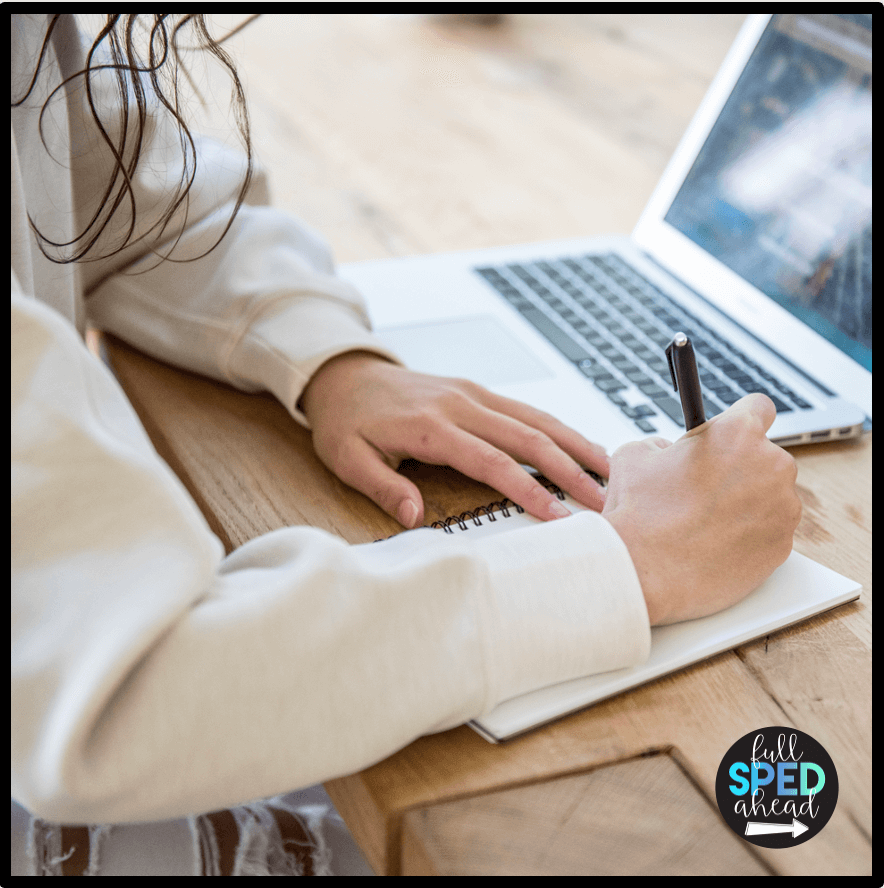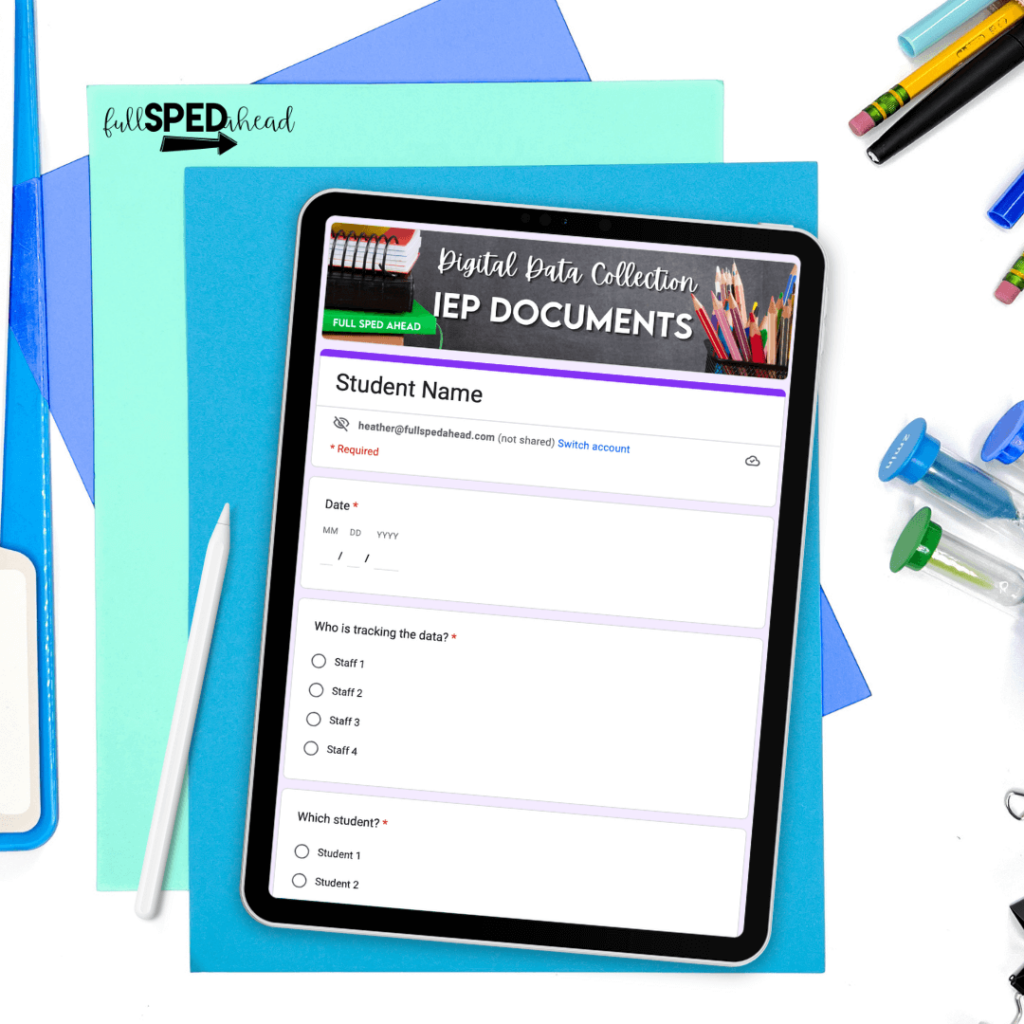As special education teachers, we are tasked with not only delivering effective instruction but also meticulously IEP goal tracking our students’ progress towards their Individualized Education Program (IEP) goals. This data is crucial for measuring student growth, making instructional decisions, and ensuring that we are meeting the unique needs of each student. However, finding the time to consistently track IEP goals amidst the demands of a busy school day can be challenging. In this blog post, we’ll explore why it’s essential to include IEP goal tracking in your daily schedule and provide practical strategies to seamlessly integrate this task into your routine.
IEP goal tracking is a legal requirement under the Individuals with Disabilities Education Act (IDEA). Consistent and accurate data collection ensures compliance with federal and state regulations, providing accountability for the services and supports outlined in each student’s IEP.

Tracking IEP goals allows teachers to make informed, data-driven decisions about instructional strategies and interventions. By regularly monitoring progress, teachers can identify areas where students are excelling or struggling and adjust their approaches accordingly.
Frequent progress monitoring provides valuable information for communicating with parents, administrators, and the IEP team. Clear and up-to-date data helps facilitate productive discussions about student performance and the effectiveness of current strategies, fostering a collaborative approach to supporting student success.
Consistent IEP goal tracking helps document student growth over time, providing a clear picture of their academic and behavioral development. This information is essential for writing accurate and meaningful progress reports, updating IEPs, and advocating for additional resources or supports when necessary.
Dedicate specific times during the day or week solely for data collection. This could be during morning work, independent practice, or centers. Having a set schedule ensures that data collection becomes a regular part of your routine and reduces the likelihood of it being overlooked.

Incorporate data tracking into your daily lessons and activities. Use exit tickets, quick assessments, or observational checklists during instructional time to gather data on IEP goals. This approach allows you to seamlessly collect data without disrupting the flow of your lessons.
Leverage technology to streamline data collection. Digital tools, such as Google Forms or specialized IEP tracking apps, can simplify the process of recording and analyzing data. These tools can be accessed on-the-go, making it easier to collect data in real-time. You can grab my best selling digital data forms here!

Organize your data collection materials in a dedicated binder. Include data sheets, progress monitoring forms, and any other necessary documents. Keep the binder easily accessible, so you can quickly record data during transitions, independent work, or any downtime.
Set aside time each week to review the collected data and plan for the upcoming week. Use this time to identify trends, adjust instructional strategies, and set goals for the next data collection period. This regular reflection ensures that your teaching remains responsive to your students’ needs.
Including IEP goal tracking in your daily schedule is essential for supporting your students’ growth and ensuring compliance with legal requirements. By implementing practical strategies, such as scheduled data collection times, integrating data into instruction, utilizing technology, collaborating with paraprofessionals, creating a data collection binder, using visual aids, and reflecting weekly, you can effectively track and document student progress. Prioritizing IEP goal tracking not only enhances your teaching practice but also contributes to the overall success and development of your students.
Read more about data collection:
What are you looking for?
COPYRIGHT © 2025 Full SPED Ahead